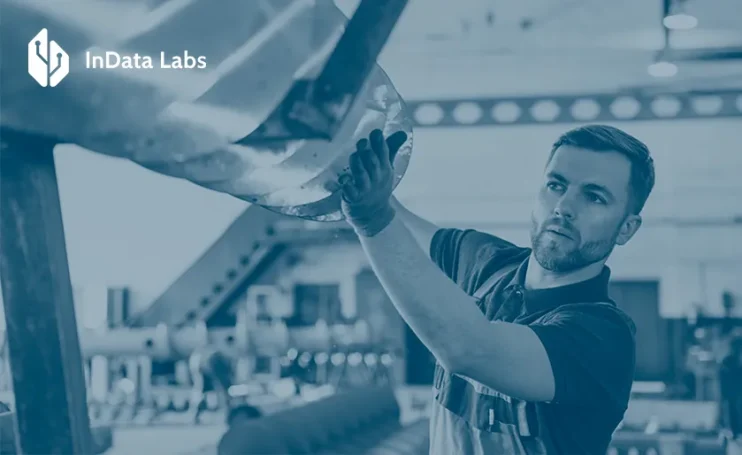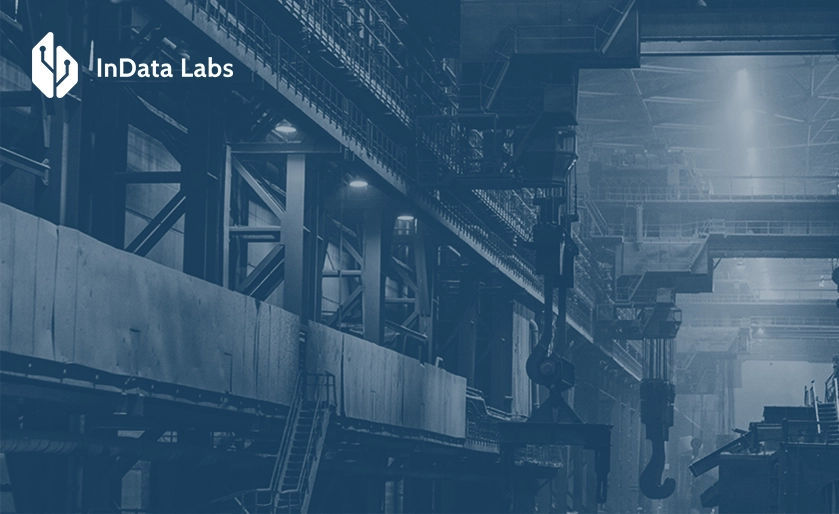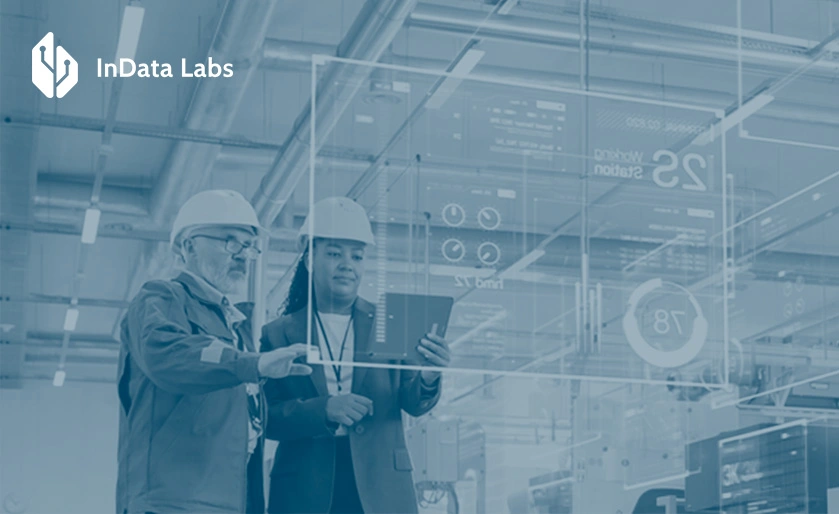Across all areas of business, hype, interest, and adoption in artificial intelligence (AI) continue to grow. The manufacturing industry has long been ahead of the curve when it comes to technological innovation, from Industrie 4.0 to cutting-edge supply chains. And the tools and services that manufacturing companies use have been fast on the uptake with AI features.
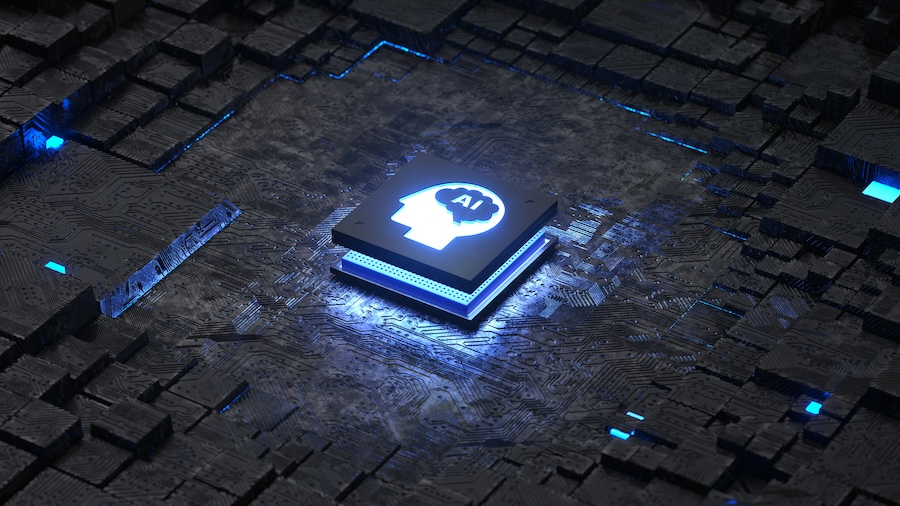
Source: Unsplash
According to McKinsey, the manufacturing sector has shown minimal growth for decades, but AI has given the market fresh impetus. “More recently, AI, digital technologies, sustainable features, and higher skills have reinvigorated the market: over the past five years, US industrial companies have generated total shareholder returns about 400 basis points higher than in the previous 15 years.”
This rollout of AI software features accelerates the use of smarter manufacturing services. Manufacturers are taking advantage across their operations, with many already experimenting with prototype tools from the early generation of AI and ChatGPT.
Successively, workers’ citizen-developed apps have demonstrated value and innovation, while direct upgrades from legacy products to AI-capable SaaS solutions have exposed the workforce to AI, creating interest from management and leaders.
The risks of AI in manufacturing up-front
One area of warning for all businesses is that IT leaders must monitor the unsanctioned use of Shadow IT. This is where workers can create IT that might generate invalid results on business data, create error-strewn reports based on AI hallucinations, copyright abuse, and other problematic areas for the business.
McKinsey warns manufacturers to keep a human in the loop, citing various risks to business, including: “... the possibility that data fed into models will leak, the possibility of compromising IP, and exposure to liability under regulations such as the International Traffic in Arms Regulations (ITAR) and the Health Insurance Portability and Accountability Act (HIPAA).”
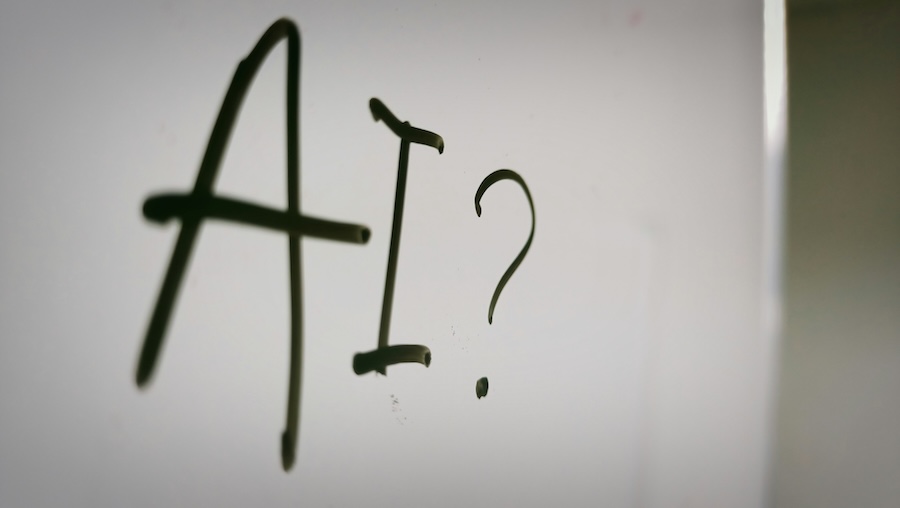
Source: Unsplash
On top of this, models have inherent biases that may amplify certain segments of data unduly, compromising the reliability of their conclusions. This underscores that AI models are not an opportunity to abandon human responsibility; human operators must take a conscientious, active hand in their use.
AI legislation is coming up fast and manufacturers must be ready to ensure their AI agents, tools and output comply with market and government rules.
Generating value from AI
The key value from AI solutions and agents are not much different to when manufacturing adopted i4 and SaaS. They include the ability to optimize operations, improve efficiency, and identify and deliver innovation at a faster pace. The difference is that AI can perform more of the analysis and create the tools to deliver these improvements.
AI, along with production automation, serves as the catalyst for smart factories. Enabling factories to improve production and decision-making processes, while offering solutions to complex business and landscape challenges. AI solutions typically come with the ChatGPT integration or other AI toolsets (Microsoft’s Copilot, DeepMind and others) to help the manufacturer find the best answers to its queries.
AI agents are a growing force in manufacturing; an agent is simply a packaged system that is told to achieve a goal by accessing specific data (internal business information, market reports, manufacturing data etc). Learning or goal-based agents can learn over time and improve their results, supporting manufacturing with fresh data and insights.
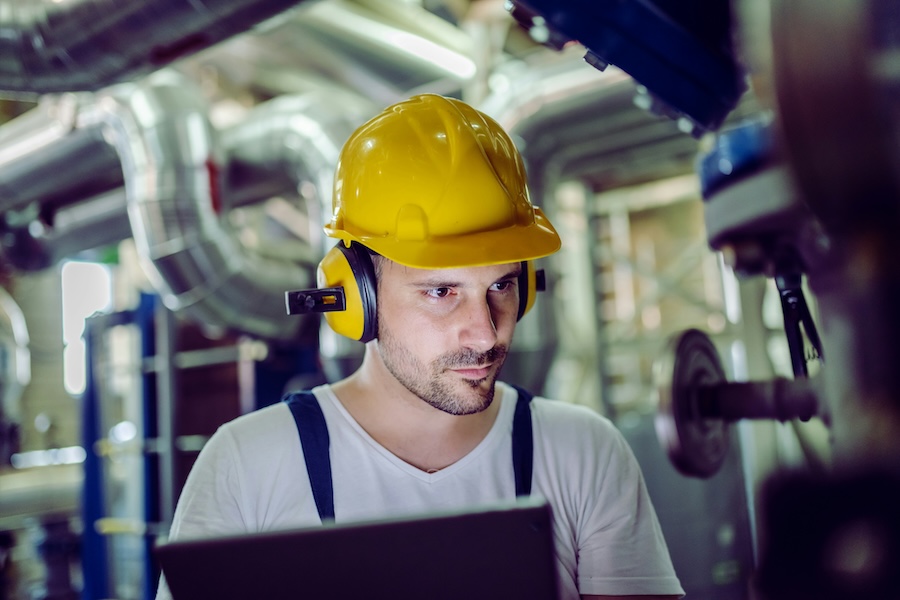
Source: Unsplash
AI also affects all areas of an organization, with smart AI tools improving meeting performance, assigning tasks, and creating research and reports to speed up business strategies and development.
In this research, we explore real-world AI in manufacturing examples and use cases of AI in manufacturing, highlighting how this fast-moving technology is reshaping the manufacturing industry, and will do so for decades to come.
IT research firm Gartner notes in its research ‘Innovation Insight: What Generative AI Means to Manufacturing Strategy Leaders’ that “Generative AI is a profound change for manufacturing operations. It will ultimately transform the human-machine interface.
GenAI will influence the growth of an augmented connected workforce (ACWF) in manufacturing operations by transforming the human-machine interface (HMI) as factory workers interact directly with virtual advisors and chatbots to create and classify content differently. This will improve decision speed and accuracy.”
Tracking down AI in manufacturing examples
AI comes in many forms, with AI the overall term for machine learning, deep learning, computer vision, natural language processing, and generative AI.
Manufacturers already use industrial AI in various forms across the production floor and in applications between departments around the factory. AI is not new or scary, merely an evolution of typical SaaS platforms for supply chain, manufacturing execution, project and inventory management.

Source: Unsplash
Whether part of a SaaS application, created as a bespoke service for the company, or developed by citizen developers internally to support operations, there are plenty of examples to guide those new to adopting AI.
Many manufacturers have struggled with the rise of Big data in their SaaS applications, and AI can be used to analyze that data at immense speed to deliver business insights for firms. One of the most beneficial is in the area of downtime reports, helping improve productivity.
Within the manufacturing industry, these developments give startups the power to move from zero to high-growth in months rather than years, creating opportunities and risks to incumbents. At the market-level, companies will need to monitor the landscape for emerging competition, looking to acquire, out-compete or disrupt these innovations.
Examples of AI in manufacturing
AI is already a feature of many predictive maintenance tools, appearing as part of intelligent maintenance management platforms, the successor to computerized maintenance management systems.
At the administrative layer, another example of a generative AI application in manufacturing is demand forecasting, with AI providing key insights through machine learning (ML) and Big data analytics to identify trends across large datasets, refining predictions over time and as new data becomes available.
Beyond traditional manufacturing analytics, natural language processing (NLP) tools can monitor and analyze incoming news, research, market insights reports, and even social media posts to identify possible changes in demand or sentiment that can influence production.
Beyond the marketing terminology, predictive maintenance is one of the most common use cases of AI in manufacturing. Instead of waiting for equipment failure, AI-enabled systems analyze data from sensors embedded in machinery to predict potential issues. Here’s more to learn about it in this video:
In the real-world across the manufacturing landscape, companies large and small are applying AI to their processes. Examples include:
- BMW using deep learning and AI vision to identify defects and blemishes up to the microscopic level in automotive parts. Automotive AI is key for smart and cost-effective vehicle production.
- German giant Siemens is using AI analysis of sensor data to improve equipment failure prediction to new levels of early identification.
- Tesla’s car factories leverage AI demand forecasting applications to optimize production through improved inventory management.
Product innovation: An example of a generative AI application in manufacturing
Manufacturers can no longer churn out the same product, year after year. Market demands, changing consumer sentiment and design evolution all require product innovation to deliver cost savings, win new business and drive competitiveness.
Real world AI manufacturing examples for product innovation include:
- Sports brand Under Armour is using AI to analyze biometric user data to develop improved athletic wear that delivers higher performance for athletes.
- Drug companies like Pfizer use IBM Watson and other AI tools to create new drugs, performing millions of hours of analysis in weeks to accelerate possible new medicines.
- Walmart used AI to develop a fresh fashion line, based on emerging trends. This accelerated development and production time, hitting the shelves 18 weeks faster than normal.
The use of ChatGPT-powered applications help manufacturers improve their existing processes and can provide insights leading to new product design, development and production, in partnership with IoT systems to drive greater automation.
The use of generative AI in manufacturing examples
Generative AI is a great tool for manufacturers, helping teams brainstorm product ideas. The text notes or sketches for those ideas can be developed as rendered-quality visualisations by AI design tools. Reducing weeks worth of work into hours and crushing development costs down to next to nothing.
Generative AI is moving manufacturing processes from relatively simple task automation to new levels through the likes of goal-oriented intelligence. Artificial intelligence in manufacturing industry examples include meeting predicted production goals, improving product quality by specific amounts, and identifying the quality that delivers an optimal savings level.
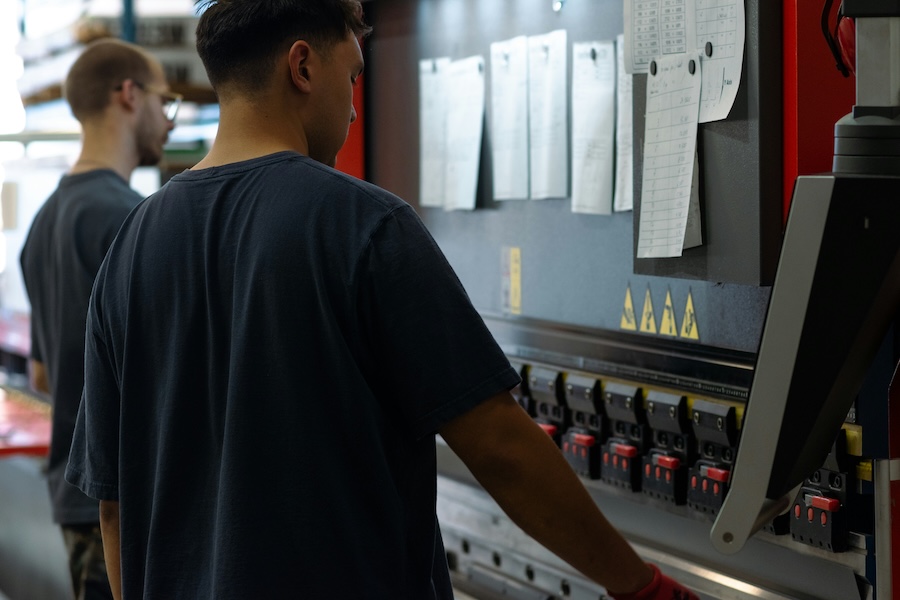
Source: Unsplash
Another example of artificial intelligence in manufacturing specifically can be seen in further streamlining processes, through AI-powered product design, production or business decision making (potentially resolving questions like “is a product of good enough quality?” By analyzing the flaws and deciding if they are noticeable to a consumer or would impact product use.)
The creative capabilities of generative AI extend beyond product development, as it can examine product, market and data history, finding insights the workers and designers won’t have access to or cannot link multiple fragments of data in a way that the AI can. That enables businesses to use AI to generate innovative product ideas and concepts, from evolving current product lines to launching blank-slate designs. Read more about generative AI use cases here.
The rise of artificial intelligence in manufacturing
The future of manufacturing lies in the sensing factory – an end-to-end production environment dominated by data and sensors. These factories will learn and adapt to production and supply demand in real-time, keeping the factory running in an optimum manner.
While current AI solutions may be provided as part of SaaS or factory applications, buyers can soon develop or acquire custom AI solutions that specifically fit their business needs. These will avoid the black box issues some solutions suffer from and will provide a competitive advantage over a generic solution.
They will only bother human overseers with critical issues, but through machine-to-machine (M2M) communications and ordering, they can keep supplies flowing at the optimum price, manage delivery schedule changes, and change product designs or orders as demand changes. All that in real-time with minimal interventions.
These uses and applications of artificial intelligence in manufacturing will boost business productivity and improve revenue through stronger budget management, cost controls, and competitive dynamic pricing at the sales side.
Future uses of AI in manufacturing
Further uses of artificial intelligence in manufacturing will see the rise of the factory in a box, with smart modular units helping producers deploy whole factories at record speed to meet demand. Consider when a new product becomes hugely popular, the vendor can order up new factories to meet demand, with AI running the factory. While rivals can analyze the product and create and start up their own factories to produce similar editions to claim a share of that market.
Factories that already have developed digital twins will be better placed to adopt and leverage AI, as these systems can merge rapidly to create a virtual view of operations, worker performance, and other elements to test the AI’s suggestions or hypotheses.

Source: Unsplash
In a similar manner, large factory facilities will be developed with reconfigurable floors, so an automotive factory can build two- or four-door cars on the same floor, with different engine (or battery system) sizes, just by swapping out a set of modular units. Again, AI will orchestrate the switch over, and assign the right components and parts.
For workers, the good news is there will still be plenty of work for them as human-AI collaboration becomes a key part of factory operations. AIs can support workers by guiding them through complex tasks, highlighting the potential for human errors. While conversely, humans can train AIs in new tasks, or highlight issues that the AI might not be aware of.
AI can also deliver updates to manufactured products at any stage of the process. Consider products with their own learning AI built-in, from self-driving cars to security camera systems. The software can be updated to enable testing on the factory floor, rather than waiting for waves of traditional testing and analyses.
Machine learning use cases in manufacturing
The machine learning (ML) element of AI services is well-known for transforming manufacturing through the use of predictive maintenance, quality control, supply chain optimization and in automation systems.
More recent developments leveraging the power of ML are generative designs where a system can envision multiple product variations. These can be based on previous designs or a set of predefined parameters, with the ML aspect guiding engineers toward the optimal design, at a faster pace than previously possible. A generative artificial intelligence company can also help manufacturers create bespoke AI products.

Looking to the future of AI in manufacturing
AI development has rocketed in the few years since it became a hot topic, and will continue to do so across many markets. Smarters AIs will deliver better results with reduced human interaction, AI machines will talk to each other and understand the world they operate in better. And AI will take on more challenging roles and tasks within manufacturing.
This will create challenges and opportunities for all manufacturers, but any business that decides they can cope without AI will soon find itself lagging behind competitors. Smarter factors, more dynamic production systems and workforce augmentation will all lead to better outcomes for manufacturers.
On the plus side, for leaders and managers, the hectic pace of AI innovation will subside as it becomes table stakes for all businesses. The short-term benefits will be replaced by longer-term strategic goals. AI will align its output to business needs and become a common part of the manufacturing software landscape.
